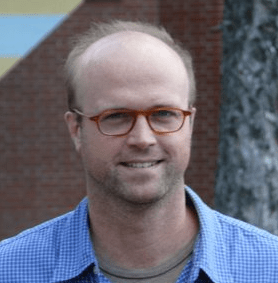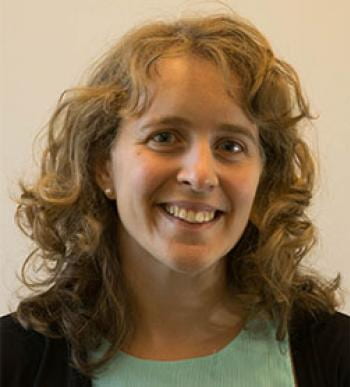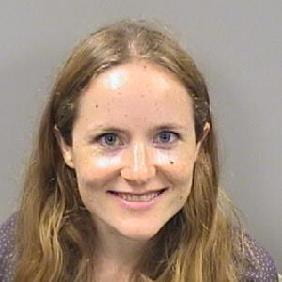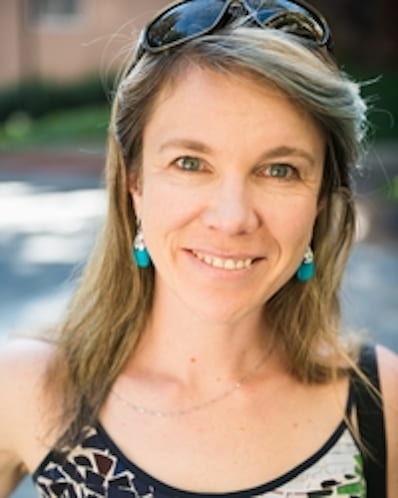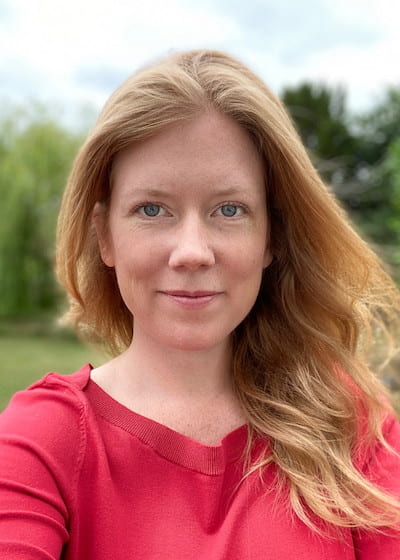Paul Larson (Miami University)
September 30, 2021 at Harvard
Title: Geometric set theory
Abstract: The field of Geometric Set Theory studies structures on sets of countable objects (typically Polish spaces) by considering virtual objects, typically uncountable sets representing members of the space under consideration in some larger model of set theory. This approach can be used to study analytic equivalence relations on Polish spaces, where the the virtual objects represent equivalence classes. The representatives of the virtual classes can be used for instance to prove non-reducibility results between such equivalence relations. Another set of applications involves separating forms of the Axiom of Choice, specifically forms asserting the existence of a set of reals with certain first order properties. Typical examples include Vitali sets, Hamel bases, discontinuous homorphisms on the real line or countable colorings of various graphs on Euclidean space. We will give a brief tour of the some of the landmarks in the area, and discuss some directions for further research.
Lisa Sauermann (MIT)
October 7, 2021 at Harvard (Science Center Hall A)
Title: Finding distinct-variable solutions to linear equations in F_p^n
Abstract: For a fixed prime p and large n, what is the largest size of a subset of F_p^n which does not contain a non-trivial solution to some given linear equation or system of linear equations? This is a fundamental question in additive combinatorics with a long history. While there are various different notions of “non-trivial solutions”, in this talk we say that a solution is non-trivial if all of its variables are distinct.
A particularly famous and important instance of the question above is the problem of bounding the largest size of a subset of F_p^n which does not contain a three-term arithmetic progression. In 2016, Ellenberg and Gijswijt made a breakthrough on this problem and the approach in their proof was later generalized by Tao yielding what is now called the slice rank polynomial method. Unfortunately, for other instances of the question above, the slice rank polynomial method cannot handle the condition for the variables in a non-trivial solution to be distinct.
In this talk, we will first give a brief survey on the slice rank polynomial method and some of its applications, and we will then discuss two different results concerning the question above. These results combine the slice rank polynomial method with additional combinatorial ideas in order to handle the distinctness condition. We also discuss an application of one of these results to the Erdös-Ginzburg-Ziv problem in discrete geometry.
Siu-Cheong Lau (Boston University)
October 14, 2021 at Brandeis
Title: Noncommutative deformations of crepant resolutions via mirror symmetry
Abstract: Noncommutative crepant resolutions of singularities formulated by Van den Bergh admit interesting quantization deformations. On the other hand, nc deformations of crepant resolutions can also be constructed via a local-to-global approach using the notion of an algebroid stack. In this talk, I will explain a mirror method of constructing explicit nc deformations of crepant resolutions, and a Fourier-Mukai transform between these two notions of nc deformations. An important ingredient is a certain class of Lagrangian objects in the mirror manifold, whose (higher) morphisms can be found via a 3d enhancement of the corresponding objects in Riemann surfaces.
John Pardon (Princeton)
October 21, 2021 at MIT
Title: Enough vector bundles on orbispaces
Abstract: An orbispace is a “space” which is locally the quotient of a topological space by a continuous action of a finite group. Familiar examples of orbispaces include orbifolds, (the analytifications of) Deligne–Mumford stacks over C, and moduli spaces of solutions to elliptic partial differential equations, as they appear in low-dimensional and symplectic topology. The fibers of a vector bundle over an orbispace are representations of its stabilizer groups. When do there exist vector bundles all of whose fiber representations are faithful? This condition is called having “enough” vector bundles, and plays an important role in the stable homotopy theory of orbispaces. In particular, it implies a Spanier–Whitehead duality functor in a certain stable homotopy category of orbispaces and a Pontryagin–Thom isomorphism for orbifold bordism groups.
Evita Nestoridi (Princeton)
October 22, 2021 at MIT (note unusual date)
Title: Spectral techniques in Markov chain mixing
Abstract: How many steps does it take to shuffle a deck of $n$ cards, if at each step we pick two cards uniformly at random and swap them? Diaconis and Shahshahani proved that $\frac{1}{2} n log n$ steps are necessary and sufficient to mix the deck. Using the representation theory of the symmetric group, they proved that this random transpositions card shuffle exhibits a sharp transition from being unshuffled to being very well shuffled. This is called the cutoff phenomenon. In this talk, I will explain how to use the spectral information of a Markov chain to study cutoff. As an application, I will briefly discuss the random to random card shuffle (joint with M. Bernstein) and the non-backtracking random walk on Ramanujan graphs (joint with P. Sarnak).
Benjamin Bakker (UIC)
November 4, 2021 at Northeastern
Title: Period integrals of algebraic varieties
Abstract: A period integral of a complex algebraic variety is the integral of an algebraic differential form along a topological cycle. While such integrals are transcendental in nature, they have had pervasive importance in algebraic and arithmetic geometry going back to the foundational work of Abel and Jacobi. The functions one obtains from taking period integrals in families of algebraic varieties moreover recur in many areas of mathematics. In this talk I will first survey how algebraic information can be extracted from period integrals, as well as their connection to various conjectural frameworks. I will then discuss recent progress on understanding the algebraic properties of period integrals in families and recent applications to Hodge theory, algebraic geometry, arithmetic geometry, and logic.
Ivan Losev (Yale)
November 12, 2021 at Brandeis (note unusual date)
Title: Unipotent representations and quantization
Abstract: A fundamental question in the representation theory of semisimple Lie groups is to classify their irreducible unitary representations. A guiding principle here is the Orbit method, first discovered by Kirillov in the 60’s for nilpotent Lie groups. It states that the irreducible unitary representations should be related to coadjoint orbits, i.e., the orbits of the Lie group action in the dual of its Lie algebra. Passing from orbits to representations could be thought of as a quantization problem and it is known that in this setting this is very difficult. For semisimple Lie groups it makes sense to speak about nilpotent orbits, and one could try to study representations that should correspond to these orbits via the yet undefined Orbit method. These representations are called unipotent: they are expected to be nicer than general ones, while one hopes to reduce the study of general representations to that of unipotent ones. I will concentrate on the case of complex Lie groups. I will explain how recent advances in the study of deformation quantizations of singular symplectic varieties allow to define unipotent representations and obtain some results about them. The talk is based on the joint work with Lucas Mason-Brown and Dmytro Matvieievskyi.
Kirsten Wickelgren (Duke)
November 18, 2021 at Northeastern
Title: An arithmetic count of rational plane curves
Abstract: There is a unique line through 2 points in the plane, and a unique conic through 5. These counts generalize to a count of degree d rational curves in the plane passing through 3d-1 points. Surprisingly, the problem of determining these numbers is connected to string theory and it was not until the 1990’s that Kontsevich determined them with a recursive formula. Such formulas are valid when you allow your curves to be defined with complex coefficients. Over the real numbers, one can obtain a fixed number by weighting real rational curves by their Welschinger invariant, and work of Solomon provides a recursive formula. It is a feature of A1-homotopy theory that analogous real and complex results can indicate the presence of a common generalization, valid over a general field. For fields of characteristic not 2 or 3, we give such a generalization. The resulting count is (the stable isomorphism class of) a bilinear form (for reasons we will discuss), or an element of the group completion GW(k) of symmetric, non-degenerate, bilinear forms over k. For example, there are 2(<1>+<-1>) + 6<1> + <2>+<2D> rational degree 3-plane curves passing through a general configuration of 6 k-points and a pair of conjugate k(sort{D})-points in the plane. No knowledge of A1-homotopy theory or GW is assumed. This is joint work with Jesse Kass, Marc Levine, and Jake Solomon.
Julia Pevtsova (University of Washington)
December 2, 2021 at Northeastern
Title: Tensor triangular geometry for stable categories
Abstract: Representation theory of a finite group or a Lie algebra over a field of positive characteristic or a small quantum group over the complex numbers is usually highly non-semisimple. The lack of semisimplicity can be measured by the complexity of the stable category associated to a given algebraic object. The stable category has a tensor triangular structure which allows to study it somewhat like a commutative ring from the algebraic geometry perspective: study ideals, prime ideals, Zariski spectrum and supports. This is precisely what tensor triangular geometry, introduced by P. Balmer in 2005, does. In particular, the (Balmer) spectrum of a stable category produces a geometric invariant which carries information on the complexity of the original non semisimple category.
I’ll give an introduction to tensor triangular geometry and describe some known calculations and open problems for the Balmer spectrum.
Holly Krieger (Cambridge)
December 9, 2021 at Harvard
Title: A transcendental birational dynamical degree
Abstract: The dynamical degree of an invertible self-map of projective space is an asymptotic measure of the algebraic complexity of the iterates of the map. This numerical invariant controls many aspects of the dynamics of the map, and in this talk I will survey the significance of the dynamical degree and discuss some important examples. In these examples, the dynamical degree is an integer or an eigenvalue of an integer matrix, so an algebraic number, as was conjecturally the case for all such maps. I will discuss joint work with Bell, Diller, and Jonsson in which we refute this conjecture by constructing invertible maps of projective 3-space which have transcendental dynamical degree.
The colloquium meets (by default) on Thursdays at 4:30 PM Eastern in varying modalities (contact institutional organizers for details). The organizers include Bong Lian at Brandeis; Fabian Gundlach, Myrto Mavraki, and Assaf Shani at Harvard; Scott Sheffield at MIT; and Matthew Hogancamp, Ben Knudsen, Gabor Lippner, and Jonathan Weitsman at Northeastern. This website is maintained by Ben Knudsen. The image of Boston is the property of Wikimedia user King of Hearts and is reproduced here under Creative Commons license CC BY-SA 4.0. Images of speakers are their own property and are reproduced here with permission.
